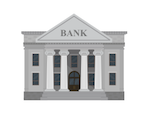How to Exchange Canadian Dollar to Indian Rupee
Canadian Dollar to Indian Rupee Exchange Rate History
The Canadian dollar (CAD, C$) is the official currency of Canada and one of the top-held reserve currencies in the world. It was officially introduced into circulation in 1858. The Canadian dollar has historically had higher value than the Indian rupee (INR, “Rs”). Between 2000-2015, the Canadian dollar-to-rupee exchange rate (CAD to INR) largely traded in a range of Rs29.3440 and Rs60 to the dollar, reaching an all-time high of Rs61.4925 during this time. The average exchange rate between the two currencies for the same time period was Rs41.2659 to the dollar.
Canadian Dollar Gains Despite Indian Economic Growth, 2000-2012
Since 2000, the Canadian dollar has steadily gained ground against the rupee as the Indian government works to maintain rising inflation and public debt levels. The Canadian economy has also been buoyed by strong global prices for oil and other commodities, which represent the majority of it exports. In the 1990s, the Indian government introduced a number of liberalization measures meant to stimulate economic growth. These measures included reduced controls on foreign trade and investment, privatization of state-owned enterprises, and deregulation of many Indian industries. This helped to attracted higher levels of foreign investment, and the country’s GDP growth rate averaging just under 7% each year between 1997 and 2011.
Nonetheless, the Canadian dollar continued to gain on the rupee, which was weighed down by rising inflation and public debt levels. In mid-2006, the exchange rate for the CAD crossed the Rs40.0 threshold for the first time and began trading in a narrow band between Rs40.0 and Rs42.50 to the dollar through mid-2009. The dollar continued to climb, reaching a CAD to INR conversion rate of Rs45.0297 by the end of 2010.
The dollar’s value continued to climb in 2011, though the pace of gains had slowed somewhat. India’s increasing interest rates, rising inflation, and investor pessimism regarding the global economy and the Indian government’s economic policies were affecting the rupee’s value compared to most major world currencies. The Canadian dollar passed the Rs50 mark for the first time in 2011, finishing the year at a record Rs51.8288.
Rupee Slides in Early 2015 against the Dollar
The rupee’s fall evened out over the next six months, as fears subsided over stability in emerging markets, and the exchange rate fell back to Rs54.87 by March 2014. India’s long-term growth outlook is moderately positive; GDP growth is expected to remain around 7% range in the next few years as government reforms begin to take effect, supported by a young and well-educated workforce and India’s increasing integration into the global economy. In early 2015, the CAD to INR exchange rate had fallen to a near three-year low of Rs51.66 in January. However, while the Indian economy grew at a rate of 7.5% and the rupee began to stabilize in 2014, its currency has slipped against most major currencies.
Canada’s economy, meanwhile, is still grappling with the effects of the global recession, including high public debt, an aging workforce that will be entering retirement over the next several years, and high unemployment levels. Most forecasts predict a moderate near-term outlook for the Canadian economy, though employment is expected to remain sluggish until at least 2016. Continued global demand for commodities and energy, however, is expected to offset any negative effects from its shrinking workforce in the near-term.





